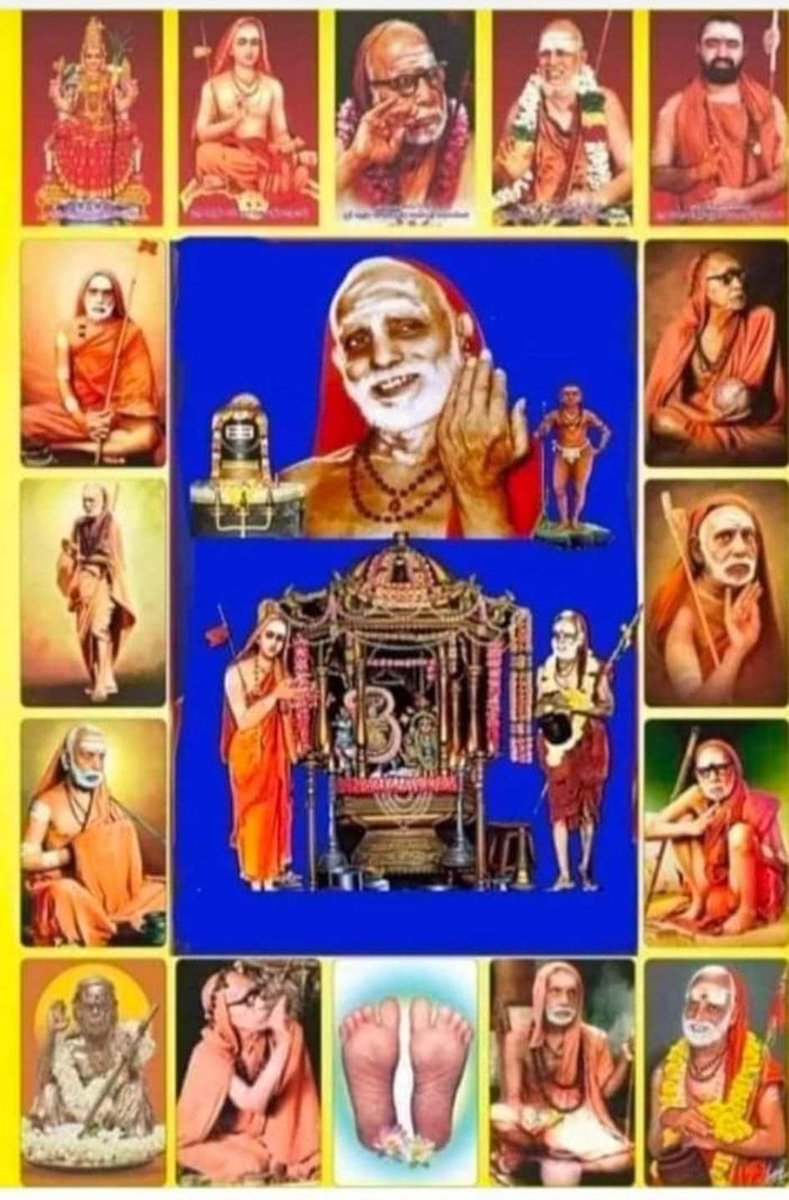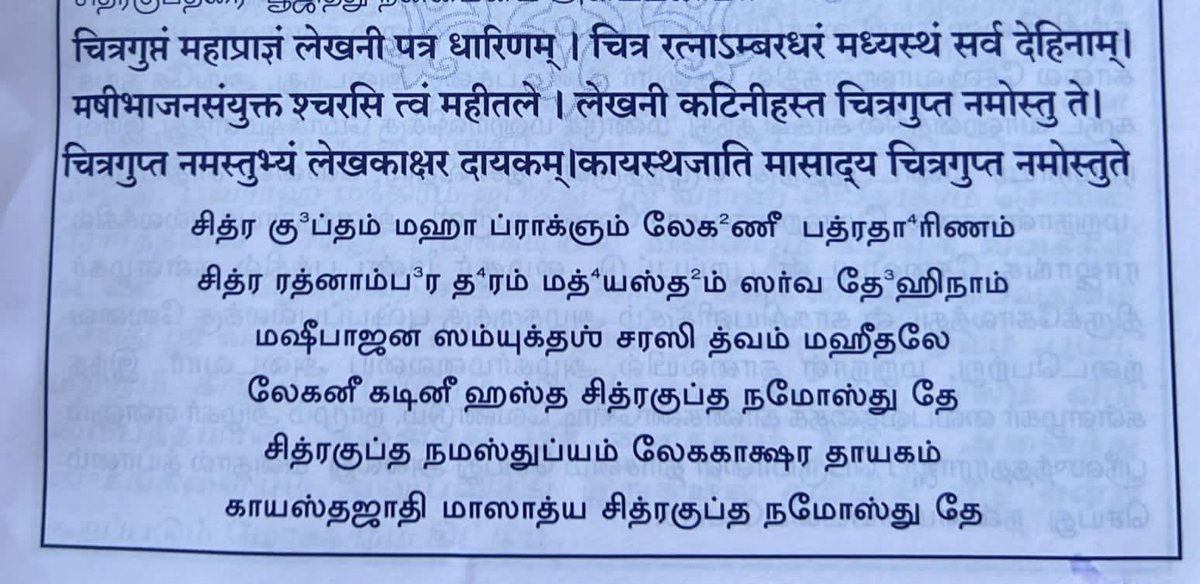
#MahaPeriyaba In Sanatana Dharma, the term annam is used for the English term 'food', but not as an equivalent. The term annam denotes and connotes physical and spiritual ramifications. Annam is not just something which is input to stomach and digested, but it includes everything 

that is ingested by the ten senses and the mind. This is the reason our physical body is called ‘annamaya kosha’. A number of our scriptures talk about annam. The main emphasis is on the truth ‘What we eat, we become’. Kanchi Paramacharya, Sri Chandrasekharendra Saraswati Swami
took sannyasam and ascended the throne of Kanchi Kamakoti Peetham at the age of thirteen. From that day, until he attained videha mukti at the age of 100, he lived an exemplary life of strictest austerity. His daily main meal was often astonishingly simple: a small handful of
puffed rice soaked in buttermilk. Even this was not taken when he went on fasting for days together. Occasionally, he took bhiksha from his devotees, but it was more to satisfy their desires than for his own welfare. In one of His lectures Maha Periyava explains,
A typical South
A typical South
Indian meal is served in three main courses: sambar sadam, rasam sadam, and more (buttermilk) sadam. Sambar is also known as kuzhambu in Tamil, a term that literally translates to 'get confused'. Paramacharya explains how these three courses are related to the three gunas of
spirituality: the confusion of sambar is ‘tamo guna’, the clarified and rarified flow of rasam is ‘rajo guna’ and the all-white buttermilk is ‘satva guna’. Our meal reminds us of our spiritual path from confused inaction to a clear flow of action and finally to the realized bliss
of unity.
#sadham Cooked rice, the main dish of a South Indian meal is called sadam. That which has sat is sadam, in the same way we call those who are full of sat, sadhus. We can give another explanation for the term: that which is born out of prasannam is prasadam. What we
#sadham Cooked rice, the main dish of a South Indian meal is called sadam. That which has sat is sadam, in the same way we call those who are full of sat, sadhus. We can give another explanation for the term: that which is born out of prasannam is prasadam. What we
offer to Swami (God) as nivedanam is given back to us as prasadam. Since we should not add the root 'pra' to the rice we cook for ourselves, we call it sadam.
#Rasam means juice, which is also the name of filtered ruchi. We say 'it was full of rasa' when a speech or song was
#Rasam means juice, which is also the name of filtered ruchi. We say 'it was full of rasa' when a speech or song was
tasteful. Vaishnavas, because of their Tamil abhimanam, refer to rasam as saatthamudhu. It does not mean the amudhu (amrita) mixed with sadam. It was actually saatramudhu (saaru or rasam + amudhu), which became saatthamudhu.
Vaishnavas also have a term thirukkann amudhu that
Vaishnavas also have a term thirukkann amudhu that
refers to our payasam. What is that thirukkann? If rudraksham means Rudra's eye, does 'thirukkann' mean Lakshmi's eye? Or does the term refer to some vastu (article) added to payasam? No such things. Thiru kannal amudhu has become thirukkann amudhu. Kannal means sugarcane, the
base crop of sugar and jaggery used in payasam. I was talking about rasam. If something is an extraction of juice, then would it not be clear, diluted and free of sediments? Such is the nature of our rasam, which is clear and dilute. The other one, served earlier to rasam in a
meal, is the kuzhambu. Kuzhambu contains dissolved tamarind and cut vegetable pieces, so it looks unclear, its ingredients not easily seen. Buttermilk as our dessert
A western meal normally ends with a dessert. In a South Indian meal, desserts such as payasam are served after the
A western meal normally ends with a dessert. In a South Indian meal, desserts such as payasam are served after the
rasam sadam. Any sweets that were served at the beginning are also taken at this time. After that we take buttermilk rice as our final course. MahaPeriyava explains that since sweets are harmful to teeth, our sour and salty buttermilk actually strengthens our teeth, and this has
been observed and praised by an American dietician. We gargle warm salt water when we get toothache. The buttermilk is the reason for our having strong teeth until the end of our life unlike the westerners who resort to dentures quite early in their life.
#VegetableCurry
Although
#VegetableCurry
Although
cut vegetable pieces are used in sambar, kootu and pachadi, in curry they are fried to such an extent that they become dark in color (the term curry also means blackness or darkness in Tamil). May be this is the origin of the name curry.
#Payasam
Payas (in Sanskrit) means milk.
#Payasam
Payas (in Sanskrit) means milk.
So payasam literally means 'a delicacy made of milk'. This term does not refer to the rice and jaggery used to make payasam. They go with the term without saying. Actually payasam is to be made by boiling rice in milk (not water) and adding jaggery. These days we have dhal
payasam, rava payasam, semiya payasam and so on, using other things in the place of rice.
Source: Sollin Selvar Sri Kanchi Munivar (Tamil)
Author: R.Ganapathi
Source: Sollin Selvar Sri Kanchi Munivar (Tamil)
Author: R.Ganapathi
• • •
Missing some Tweet in this thread? You can try to
force a refresh















